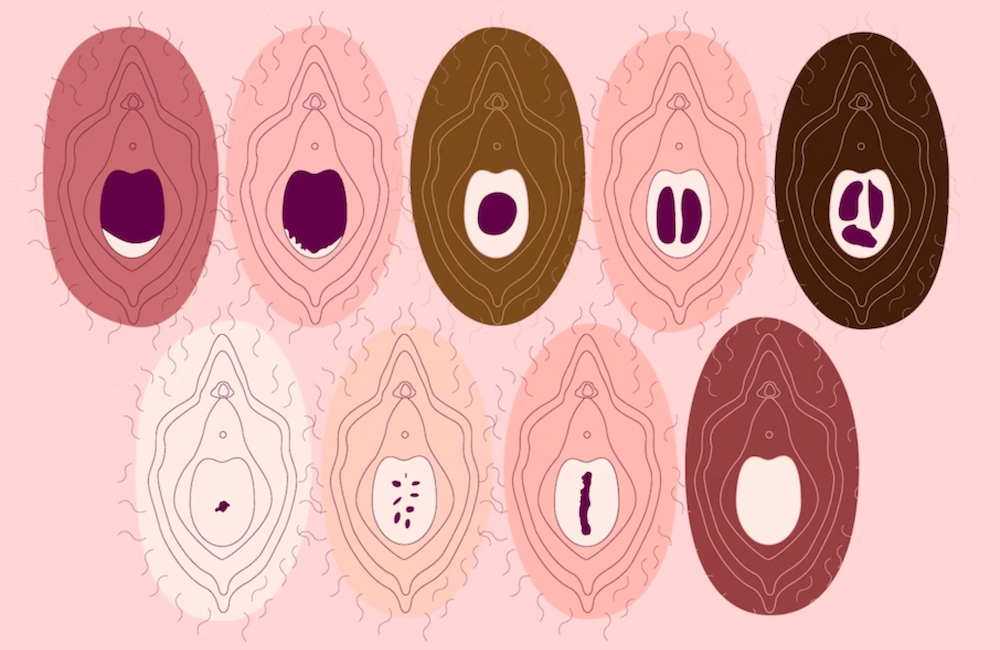
Body
Get to know your body through a better understanding of your anatomy and find the answers to some of your most common questions.

When it comes to female anatomy, misconceptions abound, particularly regarding the hymen. This thin membrane at the vagina's entrance is often subject to myths, especially those concerning virginity. Let's set the record straight with facts and dispel the misunderstandings.
Learn more incredible facts about the female body.
The hymen is a rim of tissue (thin skin) at the outer opening of the vagina. It usually has a doughnut or crescent shape with a large, central hole. However, this varies a lot, and sometimes hymens can have fringes or several holes or can consist of lobes.
Hymens are just as unique as you are. Just like vulvas come in different shapes and sizes, so do hymens. They look very different from vagina to vagina, and the shape, size, and flexibility of a hymen can change significantly across a woman’s lifespan due to changes in estrogen levels and physical activities.

Image by Naturalcycles
The most common forms of the hymen leave enough space for blood to come out during a period and even to put a tampon in. Because of its partial tears and elasticity, the hymen can allow for the insertion of tampons or menstrual cups without necessarily causing major changes to its structure (this differs from person to person). Very rarely does the hymen cover the whole vagina.
In rare cases where the hymen is imperforate (completely covering the vaginal opening) or microperforate (with a very small opening), a minor surgical procedure called a hymenectomy may be performed to remove the extra tissue and allow for normal menstrual flow.
It's a common myth that the hymen always tears during first-time sex, causing bleeding. In reality, if a woman is relaxed and sufficiently lubricated, this may not occur.
The elasticity of the hymen can allow it to retain its shape even after penetrative activities, depending, again, on the person’s body. Therefore, the shape of the hymen is no indication of sexual activity.

Illustration by Salma Elkafrawy
The link between hymens and virginity is one of the oldest myths, even though medical institutions and doctors around the world have refuted the accuracy of virginity tests. Given the variety in hymens, they simply cannot be used as proof of sexual activity. We repeat, there is NO medical way to tell if someone has had sex. The World Health Organization even declared it illegal to perform virginity tests due to the fact that medical examinations cannot accurately reveal a woman's sexual activity.
In Arabic, the hymen is called 'ghisha'a al-bikara', meaning the virgin membrane. 'Ghisha'a' literally translates to a coating or covering layer, which connotes that the membrane is sealed, closing the opening of the vagina. Physiologically this is rarely the case, so the name just further perpetuates the notion that the hymen is something that can be torn open or broken.
At birth, the hymen is thick and vascular, but it becomes thinner and less blood-filled over time. By the time a girl reaches puberty, the hymen becomes quite elastic.
During childbirth, the hymen doesn't "break" but rather stretches. After birth, it usually returns to its pre-pregnancy state, although it may appear slightly different.
The hymen is a membrane with relatively few blood vessels that — even if torn — may not bleed significantly. Forced penetration and lack of lubrication may cause lacerations to the vaginal wall, which are most likely to be responsible for the “blood-stained bed sheets,” rather than trauma to the hymen. In fact, several studies have documented that bleeding is not routinely observed after a woman’s first sexual intercourse.
Remember that everyone's body is unique, and there's no "right" or "wrong" when it comes to the hymen's shape, size, or elasticity.
Did you find the answer you were looking for? Is there something we missed? What did you think of this resource? We want to hear from you.
